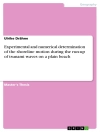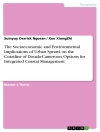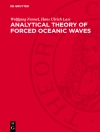The book seeks to comprehend how indigenous knowledge systems of local communities can be effectively used in disaster management of various types. A prime example is the 2015 Sendai Framework for Disaster Risk Reduction, promoting indigenous environmental management knowledge and practices. Traditional knowledge of indigenous peoples includes information and insight that supplement conventional science and environmental observations, a comprehensive understanding of the environment, natural resources, culture, and human interactions with them which is not documented before. A great deal of this knowledge have been lost in translation. In this book, the authors attempt to keep a record of each and every traditional knowledge study of the indigenous communities in managing the disasters.
The use of indigenous knowledge systems in disaster understanding and management is the primary focus of the chapters.
This book is organized into four major sections. Thefirst part gives an overview and help in conceptualizing the different concepts of hazard and disaster perception and how response and adaptation are connected with it. This part also discusses the concept of the connection between hazard and sustainable development and how the understanding of risk reduction and resilience can happen with the help of indigenous knowledge, insights, and strategies.
The second part of the book introduces the different approaches to disaster and risk management. It establishes how vulnerability influences the risk associated with a hazard and the responses can be both positive and negative in disaster management. The approaches of the indigenous communities in managing a disaster, their resilience, capacity building, and community-based preparedness will be the area of prime focus in this chapter.
Part 3 of this book describes the concept of sustainability through indigenous knowledge and practice. The sole highlight of this chapter is the indigenous knowledge efficacies in disaster identification, risk reduction, climate risk management, and climate action.
The last section of the book explores how to meet the gaps between local knowledge and policy formulation. It highlights how traditional knowledge of the indigenous communities can prove to be beneficial in developing a holistic regional-based policy framework which will be easily accepted by the target stakeholders since they will be more acquainted with the local strategies and methods. This section ends with an assessment and discussion of the gaps and future scopes in disaster risk reduction through integrating local knowledge and modern technologies.
Содержание
Part I: Conceptualising Disaster and Risk.- Chapter 1. Hazard and Disaster Perception: Cognition, Response and Adaptation.- Chapter 2. Characterising Hazard and Disaster and Sustainable Development.- Chapter 3. Understanding Disaster Risk Reduction and Resilience.- Chapter 4. Traditional management of Disaster: Indigenous Knowledge, Insights and Strategies.- Part II: Approaches to Disaster Management.- Chapter 5. Different types of Risks and Vulnerability.- Chapter 6. Fields of Response to Disaster: Positive Response and Negative Response.- Chapter 7. Disaster Resilience by Indigenous Communities.- Chapter 8. Capacity Building and Community Based Disaster Preparedness.- Part III: Sustainability Through Indigenous Knowledge and Practice.- Chapter 9. Disaster Risk Identification and Mitigation with the help of Traditional Knowledge.- Chapter 10. Disaster Risk Reduction through local Knowledge and practice-case studies.- Chapter 11. Adaptation to different types of Disaster with Integration of local Knowledge-case studies.- Chapter 12. Climate Risk Management with Indigenous Perception and Strategies- case studies.- Part IV: Science-Policy Interface Through Indigenous Knowledge.- Chapter 13. Integration of Indigenous Knowledge in Policy Formulation.- Chapter 14. Insights from Regional and Field Studies on Micro Policies.- Chapter 15. Perspectives from Indigenous Knowledge in Sustainable Development.- Chapter 16. Integration of Perception Studies and Disaster Risks.- Chapter 17. Development of a holistic Regional Disaster Policy Framework based on Indigenous Knowledge.- Chapter 18. Identifying the gaps and Future Scopes in Disaster Risk Reduction and Resilience.- Chapter 19. Conclusion.
Об авторе
Dr. Gopal Krishna Panda is Emeritus Professor in Geography and Former Chief Executive of the Population Research Center at Utkal University, Bhubaneswar. He has teaching and research experience in the area of coastal geomorphology, remote sensing, climate change, natural hazards, and disaster management focusing on program evaluation, capacity building, and value addition. He was the Gold Medalist in post-graduation from Utkal University and a visiting fellow of the Liverpool University availing British Council Fellowship. He was Principle Investigator for a major research project sponsored by the UNDP and OSDMA to prepare the ‘Odisha State Natural Hazards and Disaster Vulnerability Analysis and Risk Assessment Report’ for the state of Odisha. He is one of the advisors of ICZM program of the Govt. of Odisha. He has written and edited 6 books of which important ones are Eastern Ghats of Odisha, Flood hazards of India, Environment, Resource and Development – A Geographical Perspective, Heat Waves in Odisha. He has worked for many natural and international agencies like WHO, UNDP, DFID, and public sector organizations like OSPCB, OSDMA.
Dr. Uday Chatterjee is Assistant Professor at the Department of Geography, Bhatter College, Dantan, Paschim Medinipur, West Bengal, India, and Applied Geographer with a Post-Graduate in Applied Geography at Utkal University and Doctoral Degrees in Applied Geography at Ravenshaw University, Cuttack, Odisha, India. He has contributed various research papers published in various reputed national and international journals and edited book volumes. He has authored jointly edited books entitled ‘Harmony with nature: Illusions and elusions from Geographer’s perspective in the 21st Century’, and ‘Land Reclamation and Restoration Strategies for Sustainable Development’ (November 2021, Edition: 1st, Publisher: Elsevier, Editor: Dr. Gouri Sankar Bhunia, Dr. Uday Chatterjee, Dr. Anil Kashyap, Dr. Pravat Kumar Shit • ISBN: 9780128238950). He has also conducted (Convener) one Faculty Development Program on ‘Modern methods of teaching and advanced research methods’ sponsored by Indian Council of Social Science Research (ICSSR), Govt. of India. His areas of research interest cover Urban Planning, Social and Human Geography, Applied Geomorphology, Hazards & Disasters, Environmental Issues, Land Use and Rural Development. His research work has been funded by the West Bengal Pollution Control Board (WBPCB), Govt. of West Bengal, India. He has served as a reviewer for many international journals. Currently, he is Lead Editor of Special Issue (S.I) of Urbanism, Smart Cities and Modelling, Geojournal, Springer.
Dr. Nairwita Bandyopadhyay is presently working as Head of the Department and Assistant Professor of Geography at Haringhata Mahavidyalaya affiliated to University of Kalyani. She holds a Ph.D. in Geography from Department of Geography, Delhi School of Economics, University of Delhi. Her thesis was titled ‘Drought Impact Assessment and Analysis of Drought Policy in Gujarat.’ She holds a M. Phil in Geography (First Class with Distinction) and M.A in Geography (First Class) with special papers in Remote Sensing and GIS, Disaster Management, Environmental Impact Assessment from University of Delhi in Geography. She was awarded the N.P. Aiyyar Young Geographers Award at 38th Indian Geography Conference of National Association of Geographers in India (NAGI) IN 2016 and the Best paper award for ‘Monitoring Vegetative Drought Dynamics with drought Indices in Gujarat.’ She has published in reputed international peer-reviewed journals like Elsevier, Natural Hazards, GIS Science and Remote Sensing, Springer, Routledge with more than 100 citations. She has contributed to chapters and authored a book. She has participated in international seminars and has presented papers at Germany, Spain, Greece, and China. She participatedin training programs conducted by NASA, NIDM under ministry of Home Affairs, Govt. of India, and World Bank.
Dr. Martiwi Diah Setiawati is currently a research fellow at the Research Center for Oceanography, National Research and Innovation Agency (BRIN)—previously known as Indonesia Institute of Sciences (LIPI). She obtained her bachelor’s degree in marine science and technology from IPB University, Indonesia, in 2009. In 2012, she got a Master of Science in Udayana University, Indonesia, and a Master of Engineering in Yamaguchi University, Japan, under a double degree program. She received her Doctoral Degree in Environmental Science and Engineering from Yamaguchi University, Japan, in 2015. From 2016 until March 2021, she joined the Integrated Research System for Sustainability Sciences (IR3S) (now known as Institute for Future Initiatives-IFI), The University of Tokyo as a project researcher under the Climate Change Adaptation Initiative Project in Indonesia. This project collaborates between the Ministry of Environment Japan and the Ministry of National Development Planning of the Republic of Indonesia (BAPPENAS) to mainstream climate change adaptation into a local development plan. As an environmental scientist, she is interested in remote sensing and GIS application to multiple environmental conditions, including habitat studies, disaster mitigation, climate change impact assessment, and adaptation. Her previous research projects cover the integrated climate assessment—risks, uncertainties, and society and developing models to predict future health risks posed by changes in climate, land use, and population. She has published nearly 20 papers in various international and local journals and proceedings.
Debarpita Banerjee is a research scholar at the Department of Geography at the University of Calcutta, awaiting award of her Doctoral degree. At the same time, she is working as State Aided College Teacher- I in Prafulla Chandra College, Kolkata, India. Her field of interest is Urban and Environmental Geography. She specialises in the application of statistical and environmental valuation methods in urban natural resource accounting and has published articles and book chapters on environmental valuation in various journals. she has worked as a Research Assistant for the World Bank consultancy Project on ‘Targetted Environmental Studies in the Sunderbans’ in 2016. Her significant recent publication: “Valuing social costs and benefits for multiple uses of urban wetlands: The case of Nature Park, Kolkata” Urbanization and Regional Sustainability in South Asia: Socio-economic Drivers, Environmental Pressures and Policy Responses (pp. 87-105). Switzerland: Springer Nature (2020)












